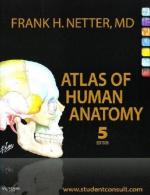|
This section contains 484 words (approx. 2 pages at 300 words per page) |

|
Based on the same structure found in other mammals, human anatomy is characterized by bilateral symmetry. However, unlike other mammals, humans walk upright. This difference has caused significant evolutionary adaptations that set humans apart anatomically from the rest of the animal world. These changes mainly concern the pelvis, which has to bear more of the organs' weight and serve as the trunk's center of balance; the feet, which have a greater load to carry; the arms, which no longer have to bear the upper body's weight; the skull, which has grown to accommodate a larger brain that has also moved more toward the body's center line; and the femur and its associated musculature.
The building blocks of human anatomy, like those of the other mammals, are four kinds of tissues, each of which serves a specific purpose. Nerve tissues comprise the nervous system and send and...
|
This section contains 484 words (approx. 2 pages at 300 words per page) |

|


